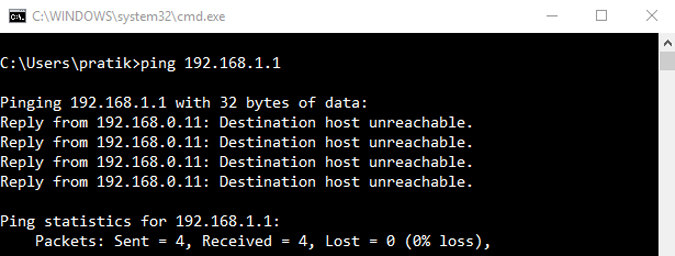

This is particularly true when you look at the data this method makes available to you. While it’s possible to scan a network for active IP addresses using native commands, manually tracking the addresses of all networked devices can quickly become an outsized task for any one staff member. Using an IP address scanner, admins can see which addresses are active, which are free for reallocation, which might belong to unauthorized users, and which have perhaps been duplicated and caused collisions. This is especially true for large organizations using dynamic IP addresses, in which case the large volume of networked devices and staggered address changes can quickly become overwhelming to track and organize. Typically, the best way to find the IP addresses of all devices on a network is to invest in software. However, there are a few ways to scan local networks for IP addresses. This will enable you to further narrow down what devices could be experiencing or causing problems.

The “ping -t” command allows you to perform an extended ping on the list produced by the previous command, testing connectivity and latency within the network. Optional: Input the command “ping -t”.This list is incredibly informative, containing the IP addresses, MAC addresses, and allocation type (whether static or dynamic) for all live hosts. In other words, the “arp -a” command displays all active IP addresses connected to the local network. ARP stands for “Address Resolution Protocol,” and the “-a” appendage of the command prompts the device to list all the IP addresses found within the ARP cache for the associated network. If the subnet mask is 255.255.255.0, then you know the first 3 bytes are the network ID (192.168.1) and your broadcast IP address is 192.168.1.255. For example, in a Class C IPv4 network-which most small local networks are wont to be-you may find your computer’s IP address is, let’s say, 192.168.1.75. Your computer will then display its own IP address, subnet mask, gateway address, and more, making it possible for you to determine the network number you’ll be scanning. Enter the command “ipconfig” for Mac or “ifconfig” on Linux.To rapidly scan a network yourself using native operating system (OS) capabilities, follow these steps. This method is best for those looking to perform a rapid, one-time device check or for those heading smaller organizations with a more manageable device list. The most basic way to find all the IP addresses on a network is with a manual network scan. When organizational members experience problems connecting their device to the network or the internet, having a full list of IP addresses on the network can guide administrators as they troubleshoot and restore order. Knowing how to scan the network for devices is the first step, and one of the most fundamental, in managing IP addresses. How to Find All IP Addresses on a Network Positioning Your Organization for Success.What Version Is My IP Address? IPv4 vs.The Importance of IP Addresses in Networking.How to Find All IP Addresses on a Network.This guide describes how IP address scanners help empower IT departments to better track the many devices within a network, identify when IP addresses have been mislabeled or misallocated, and detect possible breaches, in addition to diving deeper into the why and how of IP address management from answering basic to advanced IP address strategies. With the number of networked devices skyrocketing, network administrators must know how to scan their network for devices, track IP addresses, and perform IP address management. To maintain good network health and prevent unauthorized users from spying or wasting valuable bandwidth, admins are expected to not only know how to scan their network for devices but also understand the importance behind IP address management. With more devices comes more risk of networking complications and potential breaches-especially given the BYOD (Bring Your Own Device) trend, which allows employees to connect to company Wi-Fi via their personal mobile phones and laptops.

As the Internet of Things (IoT) continues to endow more and more devices with smart capabilities, networking grows more complex, making IP-centered network security measures a business imperative. Amid predictions that 75.44 billion devices will have internet connectivity by 2025, IP address management has become a fundamental housekeeping and security concern for any networking admin.


 0 kommentar(er)
0 kommentar(er)
